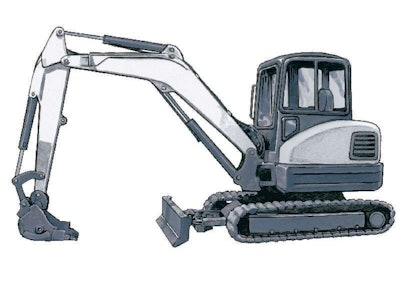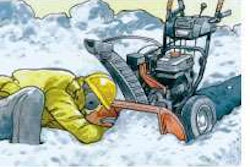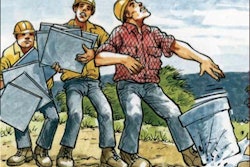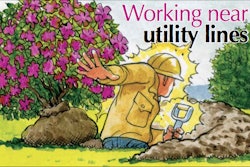

Large and small excavators have common traits but also major differences. Here’s how to put it all into perspective.
It’s easy to see the family resemblance between an 80-ton excavator doing site prep for a manufacturing facility and a 3-ton compact excavator roughing in a water feature in a residential yard. They both dig. They both lift. But the operating environments are different and some basic design elements are different, too. Keep all of this in mind to make sure you buy the right machine.
Stick and boom
Excavators have two basic functions, to dig and lift. Optimizing the machine for one will reduce its effectiveness at the other. Longer is not always better. Often having the most reach is advantageous, but for lifting heavier items, a short arm is needed. The first thing to look at when purchasing an excavator is dig depth. Make sure dipper sticks of varying lengths are available for the model you’re considering. Swapping sticks is neither easy nor quick, but it does increase the odds that your new machine will meet your needs.
Tail swing
Reduced or zero-tail overhang allows the machine to work in tight quarters, but there are compromises to the design. Stability may be reduced during digging and lifting as there’s less weight behind the center of the machine to counterbalance the load. And cramming the same amount of hardware into less space can make things tight in the engine compartment and cab. Conventional designs allow more room for both the components and the operator, while increasing the stability and the working range of the machine.
Track material
Rubber tracks are quiet and pose the least risk of damage to the terrain. Rubber pads are better at traversing sharp rocks and debris. Steel shoes are the most durable and provide the best traction, but they can severely damage surfaces such as finished concrete. One solution is to run steel shoes with triple grousers. By distributing weight over more contact area, these shoes can reduce damage to sensitive surfaces and may work fine for brief travel without turns.
Hydraulics
Big excavators have sophisticated hydraulic systems to increase productivity and enhance control, as do the better compact excavators. Pilot-control, load-sensing piston pump hydraulics give smooth control of the bucket and maximum force at low engine speeds for fast digging and swinging and lower fuel consumption. Double-acting hydraulics allow the excavator to handle hammers and thumbs.
Build quality
Check the overall build of the excavator. How heavy are the pins and the collars supporting them? How thick is the steel in the boom and dipper stick? How heavy is the connection between the boom and the house structure? All of this will come into play when your machine has 2,000-plus hours on it.











